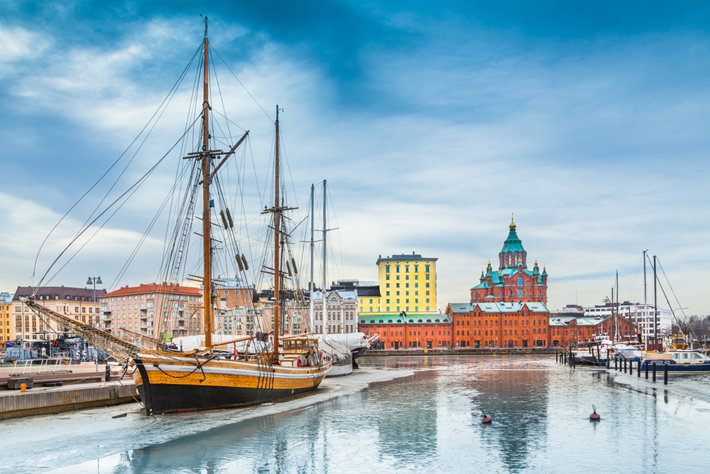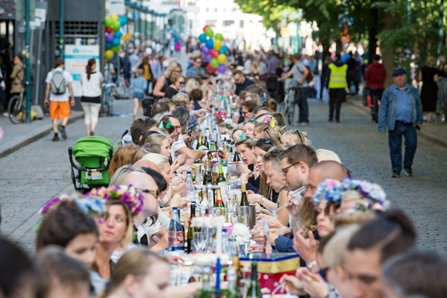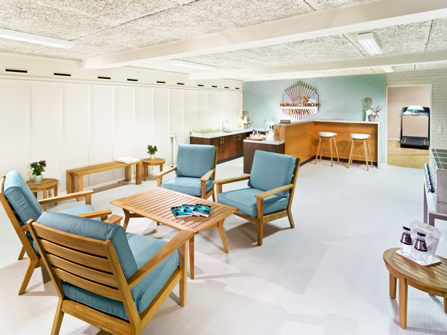Finns Fight a Battle with Both Opioids and Alcohol

A review of statistics related to which drugs send Finns to drug rehabilitation reveals that in Finland, a much larger proportion of people are struggling with opioid addiction than in other Nordic countries.
Opioid Use in Finland
The most popular opioid abused in Finland is buprenorphine—a painkiller 40 times more powerful than morphine. Its popularity makes it a lucrative drug to smuggle into the country and sell on the illicit market. This drug is commonly crushed and injected. Tramadol is the second most popular opioid being misused.
According to a November 2018 news report, an increasing number of Finns are being prescribed oxycodone, resulting in an increasing number of people needing help for addiction to the drug.
Relatively new to the illicit drug market in Finland are the powerful synthetic opioids such as fentanyl and a vastly more powerful drug from the same family, carfentanil. In September 2018, Finnish police warned that these drugs were appearing more and more on the illicit market.
Add it all up and that’s why, as reported by the European Monitoring Centre for Drugs and Drug Addiction (EMCDDA), 48% of those entering rehab in Finland are seeking help to handle opioid addiction.
A smaller percentage seek help for mixed-drug consumption (which is often the injection of a combination of opioids and amphetamines).
What other drugs send people to rehab? Cannabis sends about 20%, as do amphetamines. Hardly anyone seeks help for addiction to cocaine.
In 2017, there were 200 drug-related deaths compared with 194 in 2016 and according to the EMCDDA, opioids were present in 83% of the 2016 drug-related deaths.
Harm Reduction Efforts
The number of needles handed out is quite staggering. According to a 2018 report from the European Monitoring Centre on Drugs and Drug Addiction (EMCDDA), Finnish officials distribute 5.8 million needles per year. With a population of 5.5 million, this is more than one needle per person living in this country.
Finland and Alcohol

Finland has the second-highest rate of alcohol use in the Nordic countries. Males don’t drink constantly but, when they do, they drink large quantities. According to the World Health Organization, among Finnish men who drink at all, 66% engage in heavy episodic drinking. Women drink about half as often and half as many engage in heavy drinking.
Overall, in the last decade, alcohol consumption has decreased slightly, but still, out of a population of 5.5 million, it’s estimated that a half-million Finns drink enough to damage their health or even their lives. Now consider the fact that Finland has 3.5 million people between the ages of 15 and 64. Since typically little alcohol is drunk below 15 years of age or above 64, this could mean that as many as one in seven Finns is a problem drinker. Of course, many more parents, spouses, children, siblings and friends will suffer from the alcoholism of someone they care about.
In fact, more than one-third of the entire population has in the past year experienced a negative consequence of their drinking. It could have been an alcohol-related assault or a traffic accident or just an upsetting argument.
While drinking has decreased among young people, as well as the general population, young people suffer a much higher rate of these negative consequences. Nearly half of 15 to 29-year-olds reported negative experiences after drinking, while for 30 to 59-year-olds, just 21% did.
The recent reductions in drinking are positive, but cutbacks in public funding have meant that it’s harder for some people to get treatment for their alcoholism.
Treatment in Finland
It’s mostly men who seek treatment for drug or alcohol addiction. Males constituted 69% of those entering treatment and the average age was 34. The majority of these people reported that they were using at least three different drugs.
Nearly nine out of ten people entering treatment (86%) had been to rehab before. While drug rehab is a state-funded service, it can be difficult to find treatment. mentioned above. If the rehab services that are provided are not preventing the need to return to rehab later, then it could be suspected that the real causes of each person’s addiction are not being addressed.
According to the EMCDDA:
- 3,509 people are treated in residential programs
- 19,900 are treated in specialty drug treatment centers
- 15,549 are treated in low-threshold agencies—meaning harm reduction activities that provide services but not counseling unless it is requested
- 5,288 are treated at general healthcare facilities
For the last 5,468, the type of care is not specified.
There are an estimated 3,329 people being treated with buprenorphine or methadone at Finnish treatment facilities. As mentioned earlier, there is also a large quantity of buprenorphine on the illicit market, since, for some people, this is their drug of choice.
What Is Needed to Prevent Relapse and the Need for Further Treatment?

Is it possible to offer effective rehabilitation? How can addiction be addressed so a person can build a stable, sober life after going home?
This is the type of rehabilitation being offered at Narconon drug rehabilitation centers in Europe and around the world.
At a Narconon facility, a person does not have a deadline by which he or she must recover or leave. Each person finishes the program at their own speed. Each person has their own traumatic experiences to recover from, their own integrity to recover—and this happens on a different schedule for each person.
The program starts with a well-supported withdrawal step. Utilizing generous doses of detoxification-supporting nutrition and one-on-one work with the staff, those going through this withdrawal often call it the most tolerable one they have ever experienced.
The next step is one that is near and dear to many Finnish hearts. Each client spends time in a dry-heat sauna after exercising moderately and detoxification supplements are provided. In a few week’s time, it’s possible to wash away the toxins left behind after years of drug or alcohol consumption. A fresher, brighter and more positive viewpoint results and very often, the physical craving for drugs is washed away with the toxins.
Learning to Live in the Present
Very typically, a person arriving at rehab suffers greatly in mind and spirit. They bear a heavy burden of guilt from all the harm they have done to themselves, their families, friends and community. If they don’t recover from the trauma of the past and regain the ability to live in the present, they may never have a chance to build themselves a new, better life.
The step called the “Objectives” helps each person learn to perceive, enjoy and appreciate the present once again. This new ability helps an individual finally let go of the pain and anguish of the past. Now, with a fresher viewpoint and a new ability to see and enjoy the world, they are ready to gain the specific skills they’ll need to protect and maintain their sobriety.
Gaining Needed Sober-Living Skills
Finally, a person must learn how to maintain their sobriety by acquiring the skills needed to survive life’s challenges. Learning who to trust, knowing how to keep one’s integrity intact and gaining the tools to rebuild relationships are vital factors in one’s recovery.
This is the path that has taken tens of thousands of individuals to lasting sobriety since the Narconon network was founded in 1966. For those in Finland, there are Narconon centers nearby in Denmark and Sweden. This is in addition to dozens of other facilities in the U.S., Russia, Mexico, Taiwan, Nepal, Italy and other countries.
If you would like to learn more about the global addiction problem or how to locate a rehabilitation center near you, please feel free to contact us.
Updated, 26 May 2019: An earlier version of this article stated that Finns were frequently using heroin trafficked from Russia. In fact, heroin use in Finland is relatively low.
This article originally stated that Finns have the highest level of alcohol consumption of Nordic companies. Denmark has the top level of consumption, followed by Finland, according to the World Health Organization’s reports.
